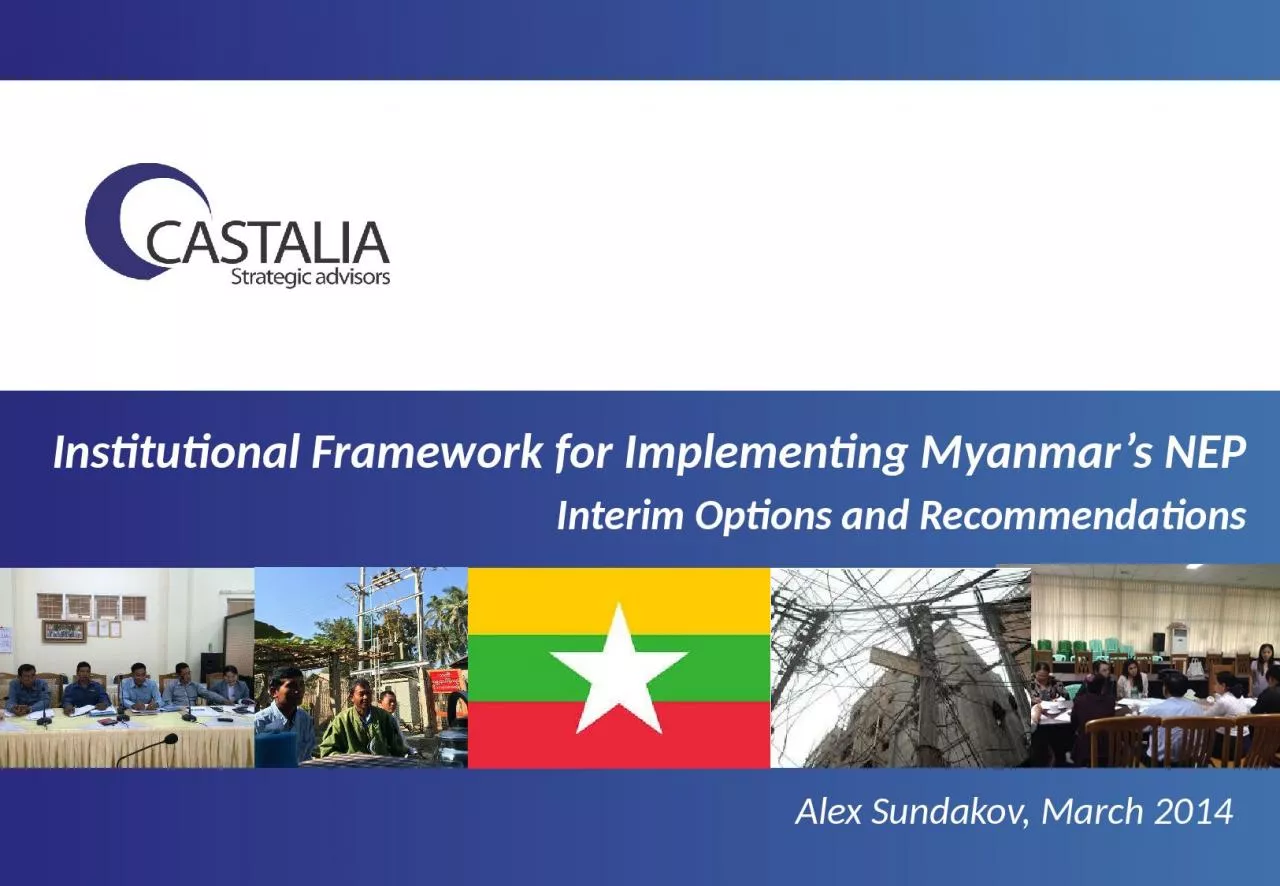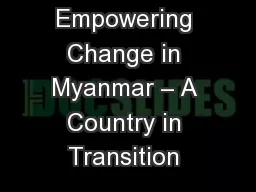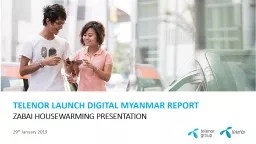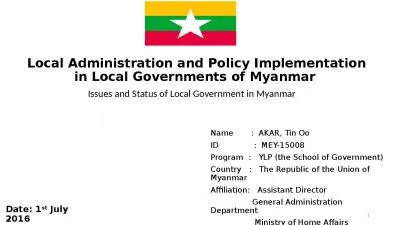PPT-Institutional Framework for Implementing Myanmar’s NEP
Author : rodriguez | Published Date : 2024-02-09
Interim Options and Recommendations Alex Sundakov March 2014 Source MOEP 20112012 ESE YESB data and Castalia estimations Assumes 65 people in a household 1 ESE
Presentation Embed Code
Download Presentation
Download Presentation The PPT/PDF document "Institutional Framework for Implementing..." is the property of its rightful owner. Permission is granted to download and print the materials on this website for personal, non-commercial use only, and to display it on your personal computer provided you do not modify the materials and that you retain all copyright notices contained in the materials. By downloading content from our website, you accept the terms of this agreement.
Institutional Framework for Implementing Myanmar’s NEP: Transcript
Download Rules Of Document
"Institutional Framework for Implementing Myanmar’s NEP"The content belongs to its owner. You may download and print it for personal use, without modification, and keep all copyright notices. By downloading, you agree to these terms.
Related Documents














